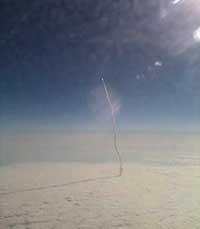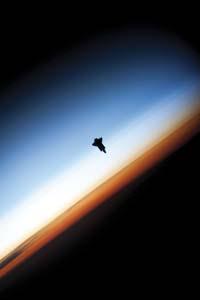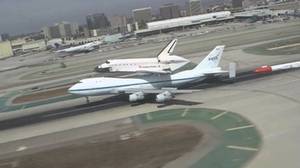End of a symbol
2011/05/17 Carton Virto, Eider - Elhuyar Zientzia
a platform that provides astronauts with infrastructure to experiment in space vacuum. And upon his return he definitively withdraws. Discovery finished its work last March and Atlantis will close in July the NASA space shuttle era forever.

After the Apollo missions and the Clarees, the ferries have been the biggest symbol of NASA since the 1980s. We have seen them go out into space attached to the rockets and land as planes. There has been no other spacecraft capable of doing so.
The Russian rockets Soiuz, other ships capable of bringing man into space, are of one use: a single module returns to Earth and makes it attached to the parachute; the landing is passive. The ferries, on the other hand, land in their entirety, like the planes, being able to be reused in much of their return. Regardless of what is most suitable, efficient and safe from a technical and economic point of view, it cannot be denied that NASA ferries have won the marketing game. They have created fascinating images in the retinas of our eyes and imagination.
However, manned exploration of space is not what it was. NASA is not for great glare and in July the unthinkable will come true when the ferry program was launched: Americans will need Russian ships to go into space. It will not be a new event, as American astronauts have previously traveled aboard Russian ships, including when the destruction of the Columbia shuttle interrupted the program in 2003. But, even though since 1981 the geopolitical context has changed drastically, this will also be a powerful image.
Because he thinks: The United States itself will not have the means to bring astronauts into space. Russia, and in part only China will be able to do so. NASA has removed the ferries without having to have spare boats prepared, knowing that they will not have a minimum age of five years, and that during that period, either in Soyuzeta or - for good behavior - the astronauts must be transported on ships of private companies. And in fact, the six localities of Soiuzeta that they have bought for 2013 and 2014 have come out cheaper (335 million dollars compared to the 450 million dollars that costs the flight of a ferry), but it is not so good. Or maybe yes, with good use... Although manned space exploration has no dazzle at this time, I think most people like astronauts go into space.
However, in 2011 a large NASA symbol disappears from space and all three remaining ferries will pass to museums. Columbia, the first ferry launched on April 12, 1981, twenty years after the man's arrival in space through Yuri Gagarin. Thirty years and 37 flights will later withdraw from space but not from work: their mission will be to regain the fascination that space travel has lost.
Published in Berria

Gai honi buruzko eduki gehiago
Elhuyarrek garatutako teknologia






